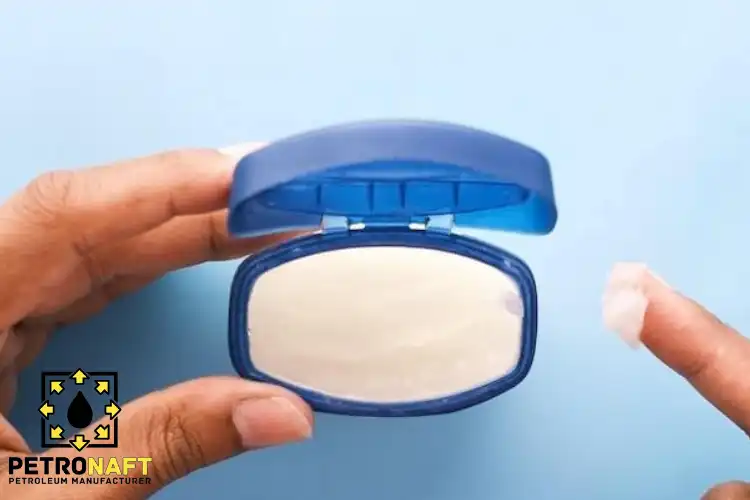Content Overview
A Deep Dive into Vaseline Components
As a staple in many homes worldwide, Vaseline has earned its reputation as a go-to solution for various skin issues. To better understand what makes it such a reliable choice, we’ll take a closer look at Vaseline ingredients and their functions. Unraveling the secrets of petroleum jelly and other components, we will discover why Vaseline continues to be a favorite for skin care and beyond.
A Brief History of Vaseline
The story of Vaseline began in 1859 when Robert Chesebrough, a young chemist, discovered a peculiar waxy substance at an oil rig in Pennsylvania. After refining the substance, he introduced Vaseline to the world, a name derived from the combination of the German word “wasser” (meaning water) and the Greek word “elaion” (meaning oil). The product’s impressive ability to soothe and protect the skin quickly gained widespread recognition.
The Foundation of Vaseline: Petroleum Jelly
The cornerstone of Vaseline’s ingredients is petroleum jelly, a semi-solid mixture of hydrocarbons derived from crude oil. This unique compound possesses a range of properties that make it an ideal skin protectant and moisturizer. As an occlusive agent, petroleum jelly forms a barrier on the skin’s surface, which prevents moisture loss and protects against environmental irritants.
The Science Behind Vaseline’s Benefits
- Skin Protection and Hydration: The occlusive properties of Vaseline’s petroleum jelly base make it exceptional at locking in moisture and shielding the skin from harsh elements. This is particularly useful during cold or dry weather when the skin is prone to damage.
- Healing Minor Injuries: Vaseline ingredients help form a protective barrier on minor cuts, scrapes, and burns, promoting faster healing and reducing the risk of infection.
- Lip Care: Vaseline serves as an effective lip balm, providing instant relief for chapped lips and creating a barrier against external irritants.
- Makeup Removal: Vaseline is a gentle yet effective makeup remover, easily dissolving even waterproof makeup without causing irritation.
- DIY Beauty Treatments: Vaseline’s versatility makes it a popular ingredient in homemade beauty treatments, such as exfoliating scrubs, moisturizing masks, and cuticle softeners.
The Surprising Applications of Vaseline Ingredients
- Household Lubricant: Vaseline can be used as a lubricant for door hinges, locks, and drawer sliders, preventing squeaks and ensuring smooth operation.
- Preventing Rust: Applying a thin layer of Vaseline on metal surfaces can help prevent rusting and corrosion.
- Leather Care: Vaseline can be used to condition and preserve leather items, such as shoes, belts, and bags, by keeping them supple and preventing cracking.
- Removing Stickers and Labels: Vaseline can help soften the adhesive on stickers and labels, making them easier to remove without leaving residue.
- Protecting Garden Tools: A coat of Vaseline on garden tools can protect them from rust and make them easier to clean.
Vaseline Alternatives and Competitors
While Vaseline remains a popular choice, other petroleum jelly products with similar benefits are available on the market. These include well-known brands such as Aquaphor, Eucerin, and various generic store brands. Moreover, some individuals opt for natural alternatives like beeswax, shea butter, and cocoa butter. Each alternative boasts its unique properties, and their suitability as a substitute for Vaseline depends on personal preferences and specific requirements.
Safety and Precautions When Using Vaseline Ingredients
Although Vaseline is generally safe for most people, it is essential to exercise caution and follow certain precautions to avoid potential issues:
- Avoid Ingestion: Vaseline should not be ingested, as it can cause stomach discomfort or, in severe cases, intestinal blockages.
- Keep Away from Eyes: Be cautious when using Vaseline near the eyes, as it can cause irritation if it comes into direct contact with them.
- Do Not Use on Deep Wounds: Vaseline is not suitable for deep or puncture wounds, as it may trap bacteria and cause infection.
- Patch Test: If you have sensitive skin, it’s a good idea to perform a patch test before applying Vaseline to a larger area. Apply a small amount of the product on a discreet area of your skin and wait 24 hours to check for any adverse reactions.
The Future of Vaseline Ingredients
As more people become environmentally conscious and seek sustainable, eco-friendly products, the future of Vaseline ingredients may involve innovations in the formulation and sourcing of its components. Efforts are already underway to develop plant-based alternatives to petroleum jelly, which could offer similar benefits with a reduced environmental impact. Moreover, manufacturers are continually researching new applications and uses for Vaseline and its ingredients, ensuring its continued relevance in various industries.
Conclusion: The Lasting Legacy of Vaseline Ingredients
The enduring popularity and widespread use of Vaseline are a testament to the efficacy of its ingredients. Its petroleum jelly base offers a multitude of benefits, from skin protection to DIY beauty treatments and even household applications. Although alternatives and competitors are available, Vaseline remains a trusted and versatile product that has withstood the test of time. As science and technology continue to advance, we can expect further developments and innovations in Vaseline ingredients, securing its place in our daily lives for generations to come.
Purchasing This Product from Petro Naft
For more detailed information and to purchase the product discussed in this article, please visit the dedicated product page below. Alternatively, use the various communication channels provided on our site to register your purchase inquiry or take advantage of our expert guidance.
Prepared by the PetroNaft Co. research team.

